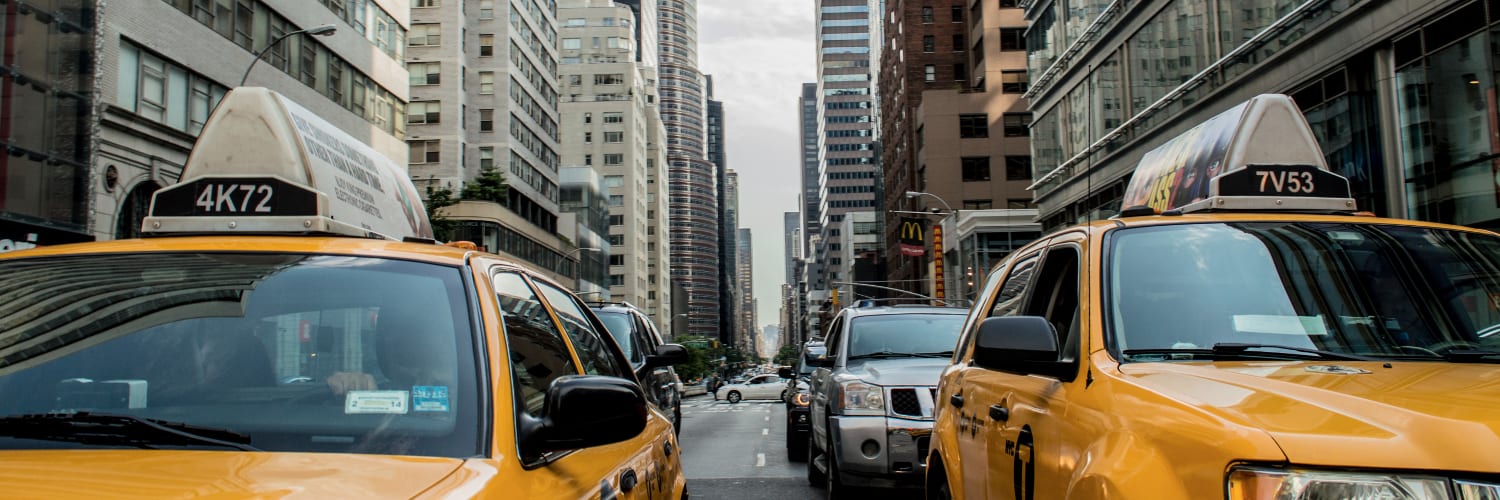“Everyone is afraid of being uberised”. The words of Maurice Levy in the Financial Times in December 2014 first brought the term uberisation to public attention. Since then this term has been used to describe a variety of phenomena, which are all linked to the upheaval in institutionalised markets caused by digital technology. In other words, uberisation has become synonymous with technological disruption.
Launched in 2009, Uber is seen as the player that turned the taxi market on its head. Uber’s idea consists of optimising unused resources, time and a vehicle, and commodifying them. Similarly, the collaborative economy (see the Terrasse and Bouvard reports) proposes to transform individuals into service providers or to share resources that are little used or unused. Uberisation is seen as inevitable, a symbol of digital changes all around us. Yet closer analysis contradicts this perception.
A matching market
The technology used by Uber is not particularly innovative. The only difference is in the scale and immediacy of digital technology. Consider what difference there is between using your thumb to control a VTC (as unofficial taxis of the Uber variety are known) on your mobile or in order to hitchhike? In fact there’s just one difference – but it’s a significant one: payment.
More precisely, it is the mercantile or non-mercantile nature of the provision which is being called into question. The change lies in the commodification of a service between non-professionals. Uber the company “merely” brings together applicants and suppliers. The Uber market is what economists call a matching market, i.e. a situation where what is exchanged is not perfectly divisible and presupposes a relationship between two parties.
Who’s afraid of Uber?
Taxi drivers have reacted strongly to Uber’s arrival in France. Their mobilisation, demonstrations and pressure on the government led to the banning of the Uberpop service which offered a VTC control application with geolocation. In general terms, the taxi sector’s rather scattershot criticisms focused not only on unfair competition – VTCs are not subject to the same rules and taxes, in particular the purchase of a professional license – but also on the mere arrival of a new form of competition which is gaining market share. That fear is spreading to other markets: hoteliers fear the development of Airbnb, advertising agencies are afraid of creative platforms, lawyers fear WeClaim or LegalStart, and publishers are up in arms about Amazon’s self-publishing service…
Founded by the self-employed entrepreneurs’ federation, the “uberisation observatory” analyses those areas that are or might be affected by uberisation. A number of sectors are concerned, from taxis to healthcare professionals and from lawyers to architects. Uberisation provokes both anxiety and debate, and feeds into both executive conversations and journalists’ articles. Yet this debate often lays out the issues and conceptual questions entailed in uberisation poorly.
A lucrative collaborative economy
Two principles coexist and must be distinguished within the collaborative economy: the non-profit, which seeks no profit for the parties in the exchange (Blabla car) and the mercantile, which seeks to maximise revenue (Uber). The non-profit collaborative economy is often driven by political concerns, and more marginal, although a few changes could make it popular, like carpooling. Conversely, the mercantile collaborative economy entails significant risks. First, the legal risk: unreported income, uncertainty about liability and insurance, and finally the disappearance of wage labour. Then there is the risk of the professionalisation of suppliers. The recent demonstrations by VTC drivers due to Uber’s lower prices resulted from the fact that many VTC drivers practise this occupation as their main activity rather than as a sideline.
A new economic model
Contrary to common supposition, with regard to both Uber and Airbnb, the disruption is not a question of technology but of the business model used. If consumers are not attracted by a collaborative solution, it does not work. It is up to the industries in question to make them more attractive than competing collaborative proposals. Similarly the existence of the low-cost model does not spell the end for traditional airlines and hard discount does not render hypermarkets obsolete.
Adequacy
The entire question lies in whether the supply is adequate for the market. If companies fail to demonstrate their usefulness and legitimacy, collaborative deals fail to achieve the success they expect. At best, they gain some market share, but remain marginal. The issue is one of market shaping. We should play an active role in the definition of market frameworks by literally doing ‘marketing’, understood as a proactive engagement in the market with a view to framing the valuation process. This involves legitimising adequacy, reorganising sectors and markets and creating value.
The technologies in question are not inherently disruptive. They become so when the actors fail to turn them to their benefit. We might for example wonder why existing taxi companies did not think earlier of creating geo-localised applications or reflecting on the user experience. Similarly, digital photography could easily have been launched by Kodak, who designed the first digital camera in 1975. Instead the company fought its development, not seeing the benefits for its business model – a strategy which led to its demise. This has not been the case with other equally well established actors in photography film.
Changes in value creation
The term uberisation masks the fact that sectoral transformation is nothing new and is not related to technology as much as to changes in value creation. This is clearly illustrated by the development of autonomous cars. The digital players are launching into it like traditional manufacturers. The question arises of who will have the legitimacy and credibility to build such cars. Traditional car manufacturers or computer and digital giants? The answer to this question will determine the sharing of value. If GAFA (Google, Apple, Facebook and Amazon) win the day, historic manufacturers will become subcontractors offering little added value. In the opposite scenario, GAFA will become providers of IT solutions. It’s not technology that will decide the outcome, but the adequacy of the legitimisation strategies of the two groups of actors.
Note that Uber’s last fundraising was valued at $60 billion. During the first six months of 2015, its revenues amounted to $663 million … The losses (in six months!) amounted to a billion dollars, against $671.6 million for the full year 2014. The uberised company has yet to prove its profitability.

As a professor, I mainly teach branding, consumer behaviour, sociology and the anthropology of consumption. As a researcher, I work on brand communities and the relationships between ethnicity and consumption, consumer resistance and shopping experiences. My research interests concern, among other things, brands and their status in our culture, lifestyles in a connected society, consumers passions and the relationships between ethnicity and consumption. I am particularly interested in consumer social movements, the construction of collective consumer identity, sociology, anthropology, visual and qualitative methods.
More information on Lionel Sitz:
• His CV online
• His Viadeo page
• His ResearchGate page
• His Academia page


Recent Comments